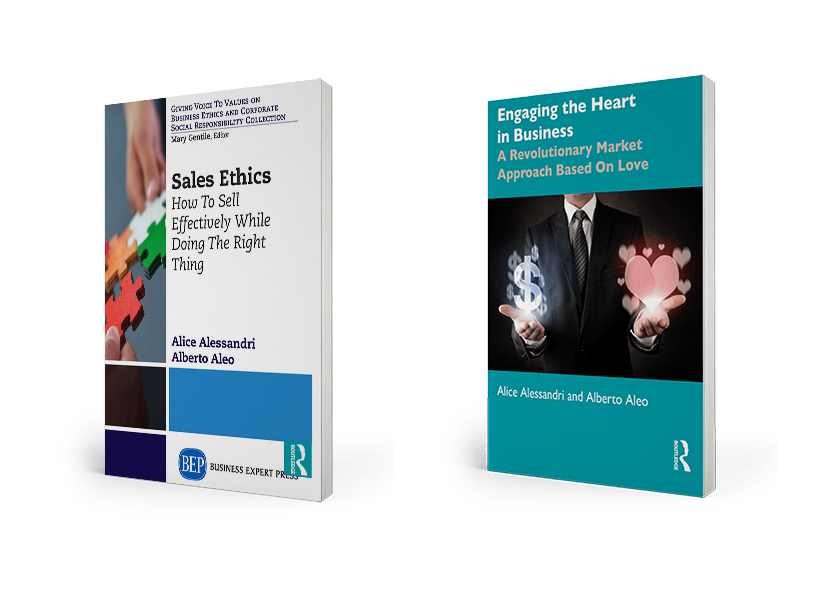by Alice Alessandri & Alberto Aleo
Do you remember the math problems at primary school?
“Bob goes to the market, buys two apples and pays $12; he then sells one to John for $10 and one to Mike for $8. How much has Bob earned? Simple- $6! “
 At that point I always asked the teacher why Mike and John didn’t go directly to the market themselves to buy their apples instead of “losing out” by buying them from Bob … She patiently explained that if all the customers went directly to the market, poor Bob would not make any money to buy food for his children.
At that point I always asked the teacher why Mike and John didn’t go directly to the market themselves to buy their apples instead of “losing out” by buying them from Bob … She patiently explained that if all the customers went directly to the market, poor Bob would not make any money to buy food for his children.
My imagination conjured up Bob’s hungry children waiting at home, and I was put off asking any more questions, but I still couldn’t stomach the idea that Bob had to “con” Mike and John to feed his children – after all the others surely had children of their own!
What I did not understand then, but later learned to identify, is that classical economic theory seems to suggest a necessary conflict of interest between customers and sellers, as we mentioned in the article dedicate to the price.
In fact, if we consider this relationship in purely economic and financial terms, this conflict of interest appears practically irresolvable:
if the objective of sellers is to maximize profit and that of customers is to maximize their purchasing power, there would seem to be no conflict-free way for both to achieve their goals within the same exchange.
The exchange of value
To find a solution to this seemingly insoluble conundrum, you have to ask yourself what the real goals of buying and selling are. Actually, you have to consider what type of “value” customers and sellers are looking for with each exchange. What objectives are we sellers setting ourselves when working? Let’s try to answer this together:
- Gain
- Reinforcement of customer relations
- Good references for other sales
- Chance to express our professional expertise and put it at the service of others
- Personal gratification

If you take a few moments to compile your own list, I’m sure you’ll add many more items, some of which will have little relation to material gains, but will concern your well-being, your ethics and the “human” dimension of your work.
Now let’s try and consider the customers’ point of view, and list their goals and expectations:
- Correct quality / price ratio
- Fulfilment of their needs
- Solution to their problems
- Honesty
- Knowledge and professionalism
- Having a stable and reliable interlocutor
Resolving the conflict of interests
Now take a close look at the two lists. Do you notice anything strange?
Most of the things we seek as sellers are not only perfectly compatible with what the customer wants, but the two lists actually complement each other!
Sellers want their professionalism recognized and customers are looking for a vendor they feel is competent! We want loyal customers with whom we can establish stable relationships and they are looking for interlocutors that they can return to over time… Seen in this perspective, the value that customers and sellers try to maximize in an exchange no longer seems to give rise to a conflict of interest, because profit and price have ceased to be the sole objectives of our “trade”.
The conflict of identity
 Moreover, the conflict of interest created in sales seems bound to generate a conflict of identity. Every seller (or would-be seller) must sooner or later face a time when their code of ethics clashes with what they are “forced” to do in order to make their sale; it might seem that the only sure route to professional success is our transformation into a customer-eating monster, at the sacrifice of our values. In a world that uses the image of “being able to sell ice to Eskimos” to define a good seller, it is clear that our business will continue to be judged unethical. Many salespeople justify themselves by saying that ‘personal relationships are one thing, but professional relationships are different’. They think they must split their personality to silence their conscience, but here’s the news:
Moreover, the conflict of interest created in sales seems bound to generate a conflict of identity. Every seller (or would-be seller) must sooner or later face a time when their code of ethics clashes with what they are “forced” to do in order to make their sale; it might seem that the only sure route to professional success is our transformation into a customer-eating monster, at the sacrifice of our values. In a world that uses the image of “being able to sell ice to Eskimos” to define a good seller, it is clear that our business will continue to be judged unethical. Many salespeople justify themselves by saying that ‘personal relationships are one thing, but professional relationships are different’. They think they must split their personality to silence their conscience, but here’s the news:
professional relationships do not exist, all relationships are personal, and despite all our efforts our “ethical” qualms cannot be silenced.
What changes is the context, but you remain the same person. The identity conflict must be resolved before you end up hating your work. How can you do this? Ask yourself what your idea of well-being entails, remembering to include your desire to be “ethical”, to respect your values and enjoy the gratification that comes from being useful to others through your products and services:
after listening to your customer you will find that maximizing value for yourself often matches the maximization of value for him/her.
This new awareness will free you from experiencing each sale as a battle against the other person, and against yourself. When the conflict of interest disappears, so too will the conflict of identity. Trust us!
| partem claram semper aspice |
The photos used - where not owned by the editorial team or our guests - are purchased on Adobe Stock and IStockPhoto or downloaded from platforms such as UnSplash or Pexels.
Did you like this post and want to learn more about the topics?
Passodue research on issues related to sales, marketing, ethics and the centrality of human beings within the market logic, officially started in 2012. The results derived from our work are described in the publications and in the books you can find in this section.





This Post Has 0 Comments